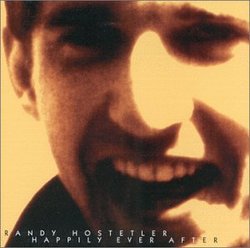The Spoken Word as Fascinating Music
Andrew E Simpson | Washington, DC | 06/21/2000
(5 out of 5 stars)
"Randy Hostetler's "Happily Ever After" is a remarkable text-sound composition, released on the Frog Peak Music label. The sound sources used in the composition are almost exclusively the spoken word; the composer recorded the voices of his family and friends telling stories. Mr. Hostetler set only one parameter for his storytellers: each story had to begin with the words, "Once upon a time," and end with "and they lived happily ever after." The content of the stories, and manner of storytelling, was left up to each person. The composition runs for a little more than 45 minutes without a break, a seemingly daunting fact for the listener. And yet, despite its formidable length, "Happily Ever After" manages not only to retain the interest of the listener, but to present ever-new combinations of sound. Perhaps the strongest feature of this work is that it can be enjoyed on many levels: musicians can appreciate the highly musical manner in which the work is organized, non-musicians can enjoy discovering the manifold thematic connections running between the stories, and all listeners will find the moving, bizarre, and often hilarious content of the various stories interesting. It is worth pointing out that, even though the subject matter consists entirely of stories, almost none, if any, are presented in their entirety. What is of most interest to the composer is the treating of the voice as a musical instrument; the sound quality of different voices, high and low, male and female, and their combinations, are what drive the piece. Many standard devices in electronic music are to be found here, such as "panning" the sound from the left to the right of the listener's space, or creating a dialogue between left and right speakers. A particularly effective technique is the use of "looping," which is the repeating of a short segment over and over: toward the end of the work, the composer's use of looping creates short rhythmicized sections which are extremely effective. These techniques are used sparingly and well: this is not meant to be a technological tour de force in which the composer's clever use of technology tends to overshadow the piece itself. "Happily Ever After" stands firmly on its own merits. The work, as noted above, behaves as a pure piece of music: the separate voices are instruments in an orchestra. Just as in instrumental music, voices sometimes sound alone, sometimes two voices "duet" together, sometimes an entire "orchestra" sounds at once: and in this latter case, the layering of multiple voices, through the very destruction of comprehensibility, focuses the listener's attention on the sound quality inherent in many voices sounding at once. The tension between our tendency to listen to words as meaningful information and the artistic appreciation of pure sound is handled well by the composer. Other musical ideas are cleverly evoked during the course of the work. The fugue, a composition in which a single voice begins, followed successively by one or more voices beginning with the same material, appears here, as successive voices enter with the beginning subject line, "Once upon a time." The idea of counterpoint (two or more musical lines playing together) is brilliantly evoked, as one storyline is joined by another, "subordinate" storyline from another voice. Just as in much musical counterpoint, there is a principal and subordinate line, so Hostetler has duplicated this relationship with voices. This is a work which repays repeated listening, and is an outstanding example of text-sound composition, such as has also been practiced by Steve Reich (as in his "Come Out," of the early 1960's, employing a vocal sound source, or his "Different Trains," which I am told postdates "Happily Ever After"). Considering the composer's years of work on pre-digital editing technology, this work is a massive achievement not only in its completion, but in its artistic quality."


 Track Listings (1) - Disc #1
Track Listings (1) - Disc #1